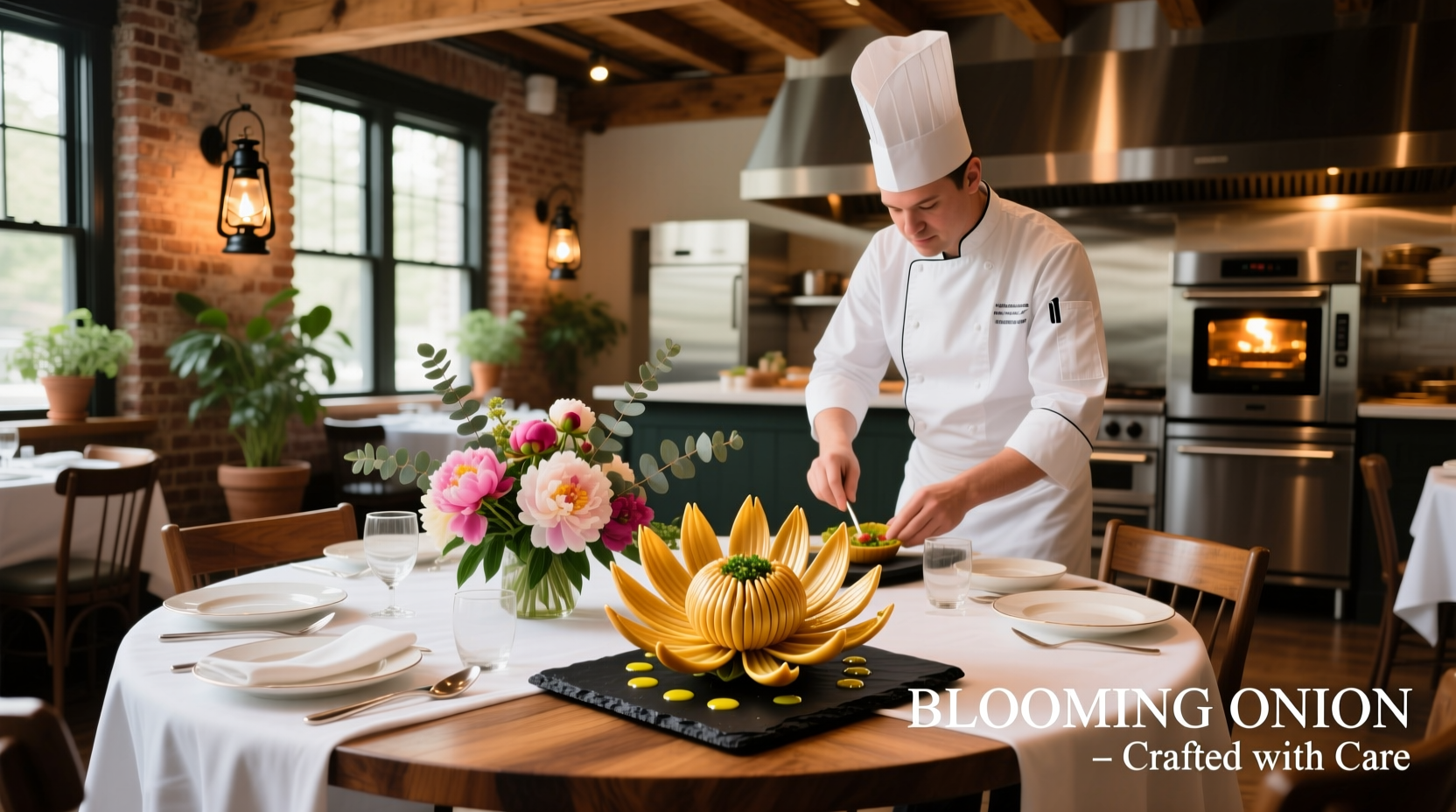If you're searching for the perfect spot to enjoy a crispy, golden blooming onion, you're not alone. This iconic appetizer has become a staple across American dining culture since its introduction. Understanding what makes a truly exceptional blooming onion experience can transform your next meal out from ordinary to extraordinary.
What Makes a Blooming Onion Special
The blooming onion isn't just another fried appetizer—it's a culinary art form requiring precision and quality ingredients. When properly prepared, the onion petals separate during frying to create a "bloom" effect while maintaining structural integrity. The best versions feature a light, crispy batter that doesn't overwhelm the natural sweetness of the onion, served with complementary dipping sauces that enhance rather than mask the flavors.

Key Elements of Quality Blooming Onion Restaurants
Not all blooming onions are created equal. The restaurants that excel at this dish share several important characteristics:
Ingredient Quality Matters Most
The foundation of a great blooming onion starts with the onion itself. Premium establishments use fresh, firm Vidalia or other sweet onion varieties during their peak season (March through May). These onions have the perfect balance of sweetness and structure to withstand the cutting and frying process while delivering that distinctive mild flavor.
Preparation Techniques That Make the Difference
| Technique | Quality Restaurant Approach | Lower Quality Approach |
|---|---|---|
| Cutting Method | Hand-cut by trained staff with precise spacing | Machine-cut with inconsistent petal formation |
| Batter Composition | Light, seasoned batter with proper thickness | Heavy, overly thick batter that dominates flavor |
| Frying Process | Correct oil temperature (350-375°F) with fresh oil | Inconsistent temperatures with reused oil |
| Serving Temperature | Served immediately at optimal temperature | Held under heat lamps causing sogginess |
How to Identify Top-Tier Blooming Onion Establishments
When searching for "blooming onion restaurant near me," look beyond just the menu listing. The best spots demonstrate these telltale signs:
Menu Transparency
Quality restaurants often specify the type of onion used (typically Vidalia or sweet onion) and may describe their preparation method. They're proud of their signature dish and willing to share details about what makes it special.
Staff Knowledge
When you ask about the blooming onion preparation, knowledgeable servers can describe the process, ingredients, and recommended pairings. They understand it's not just another menu item but a specialty worth explaining.
Regional Variations Worth Exploring
While the classic blooming onion originated in the American steakhouse tradition, regional variations have emerged across the country:
- Southern United States: Often features spicy Cajun-seasoned batters and creative dipping sauces
- Midwest: Typically emphasizes the traditional preparation with focus on onion quality
- Southwest: May incorporate local flavors like chipotle or mesquite into the batter
- Coastal regions: Sometimes offers lighter, tempura-style versions focusing on crispness
Understanding the Blooming Onion Timeline
The blooming onion's journey from restaurant innovation to cultural phenomenon follows this evolution:
- 1988: Invented by Outback Steakhouse co-founder Tim Gannon as "Outback Bloomin' Onion"
- Early 1990s: Became the chain's signature item, driving significant sales growth
- Late 1990s: Began appearing at other casual dining and steakhouse chains
- 2000s: Evolved with regional variations and specialty preparations
- 2010s-Present: Crafted by independent restaurants focusing on premium ingredients and techniques
Nutritional Considerations for Mindful Enjoyment
While undeniably delicious, understanding the nutritional profile helps you make informed choices. According to USDA FoodData Central, a standard restaurant-sized blooming onion (approximately 300g) contains:
- Calories: 1,100-1,600
- Fat: 60-80g (including 10-15g saturated fat)
- Sodium: 2,500-3,500mg
- Carbohydrates: 120-150g
Some forward-thinking restaurants now offer modified versions with lighter batters, air-fried options, or smaller portion sizes to accommodate various dietary preferences while maintaining flavor.
Common Pitfalls in Blooming Onion Preparation
When evaluating potential restaurants, watch for these red flags that indicate lower quality:
- Soggy texture: Indicates improper oil temperature or holding the onion too long after frying
- Bitter aftertaste: Suggests oil has been reused too many times
- Inconsistent petal formation: Shows lack of proper cutting technique
- Overpowering batter: When the coating dominates rather than complements the onion
- Limited freshness: Restaurants that don't specify onion type may use whatever is cheapest
Getting the Most From Your Blooming Onion Experience
To maximize your enjoyment when visiting a blooming onion restaurant:
- Ask when they prepare their onions—freshly made is always best
- Inquire about the type of oil used for frying (healthier options available)
- Consider sharing as an appetizer rather than eating the entire portion
- Pair with a crisp beverage that cuts through the richness
- Check if they offer any specialty dipping sauces beyond the standard
Finding Authentic Blooming Onion Experiences
While the dish originated at Outback Steakhouse, many independent restaurants have elevated the concept with premium ingredients and innovative techniques. Look for establishments that treat the blooming onion as a specialty item rather than just another menu option. The best spots often feature:
- Seasonal onion selections
- House-made dipping sauces
- Attention to proper frying techniques
- Knowledgeable staff who can explain the preparation
- Menu descriptions that highlight their unique approach











 浙公网安备
33010002000092号
浙公网安备
33010002000092号 浙B2-20120091-4
浙B2-20120091-4